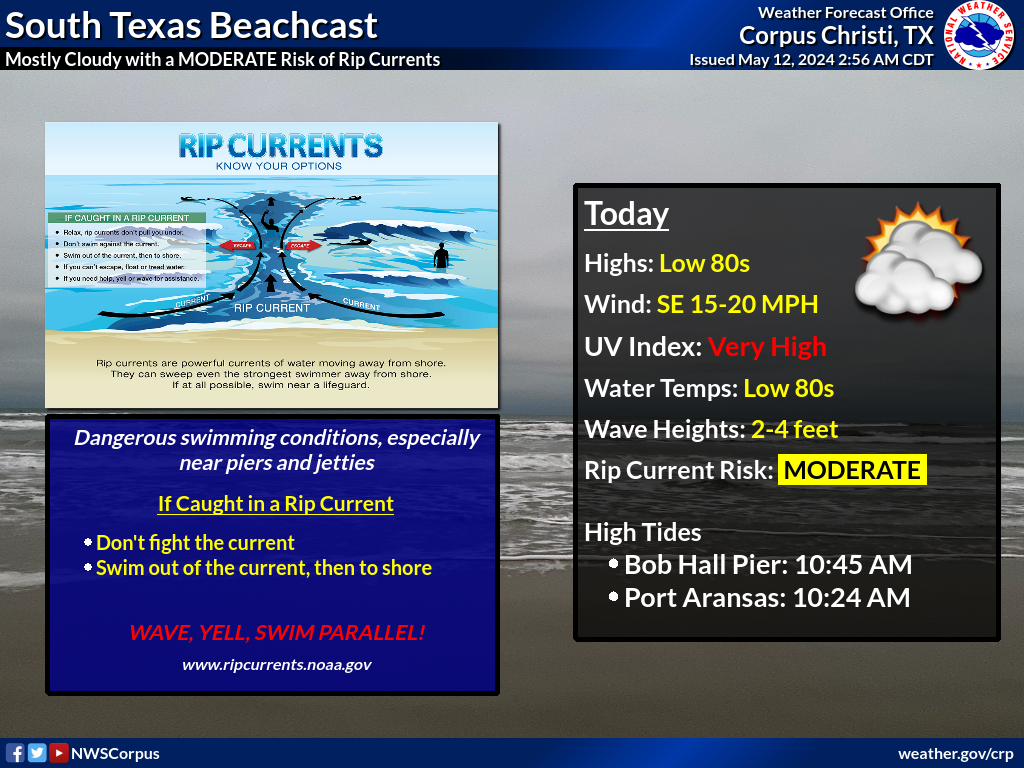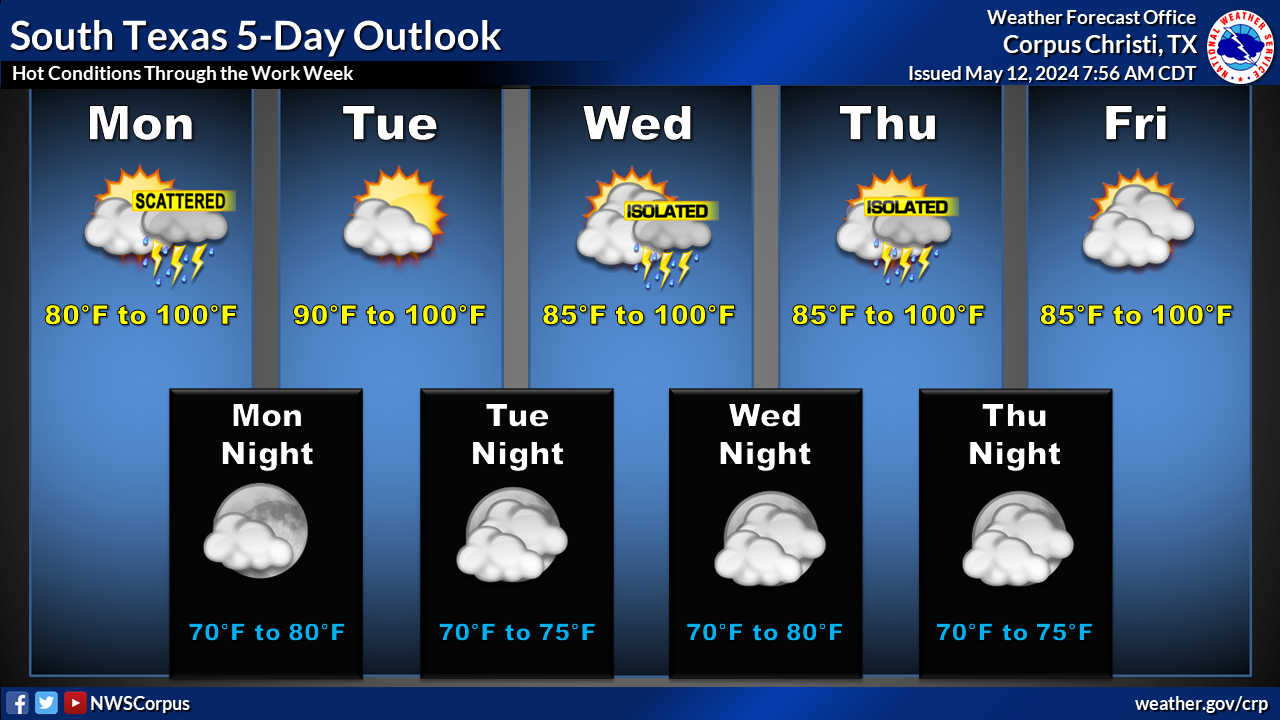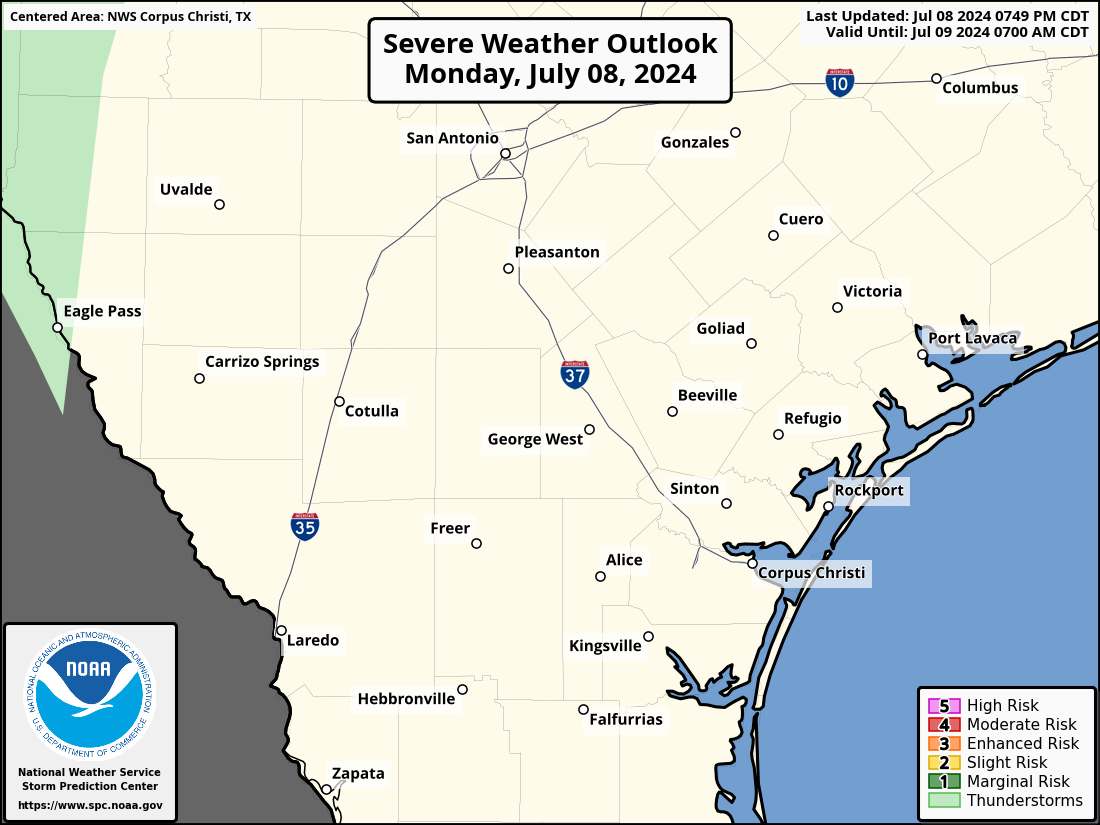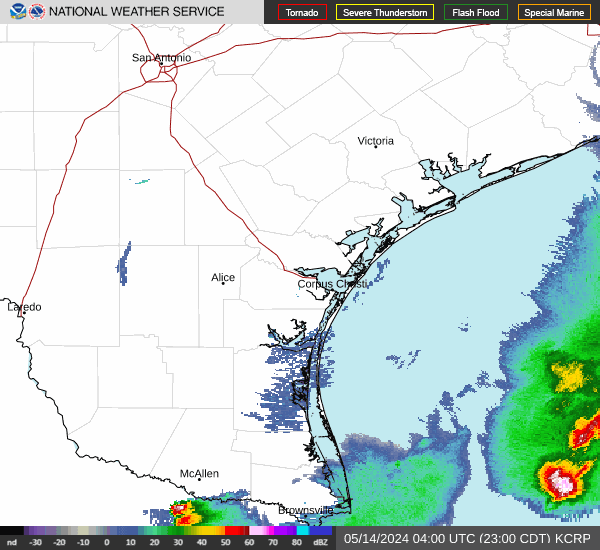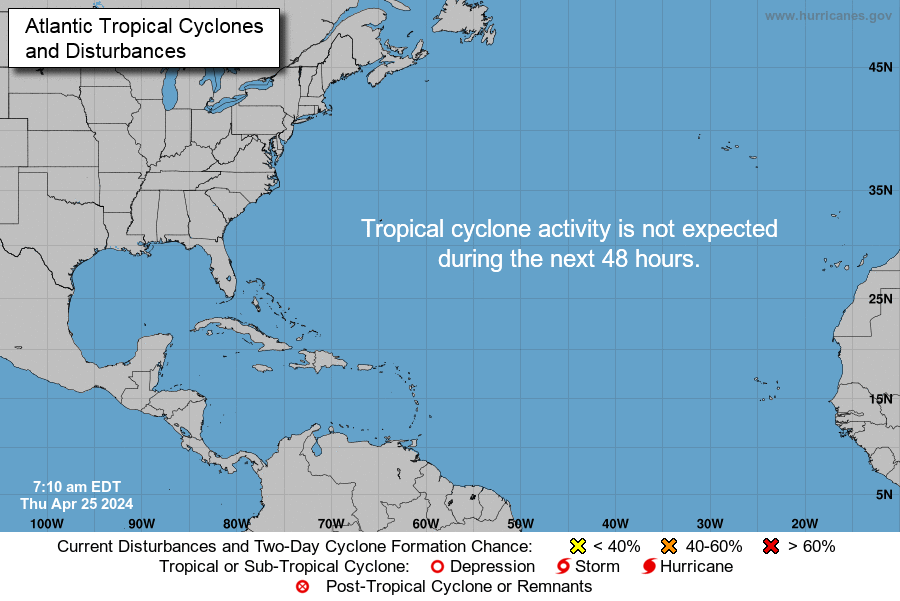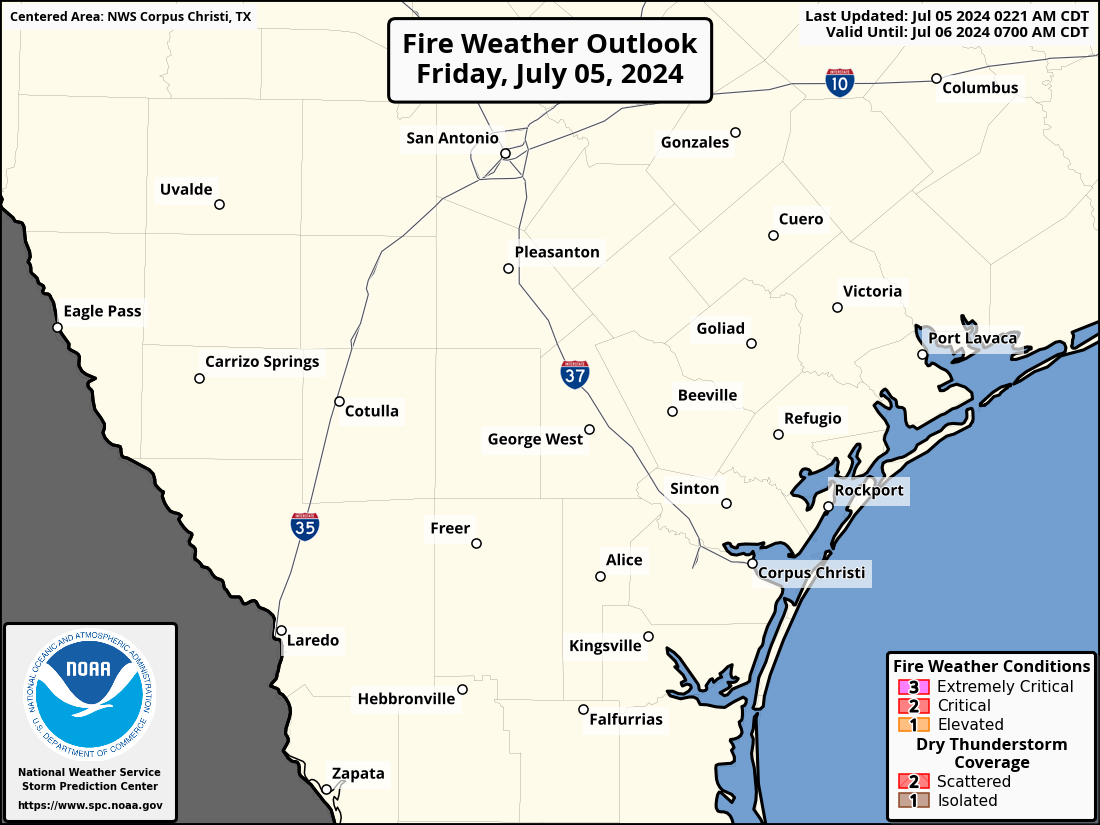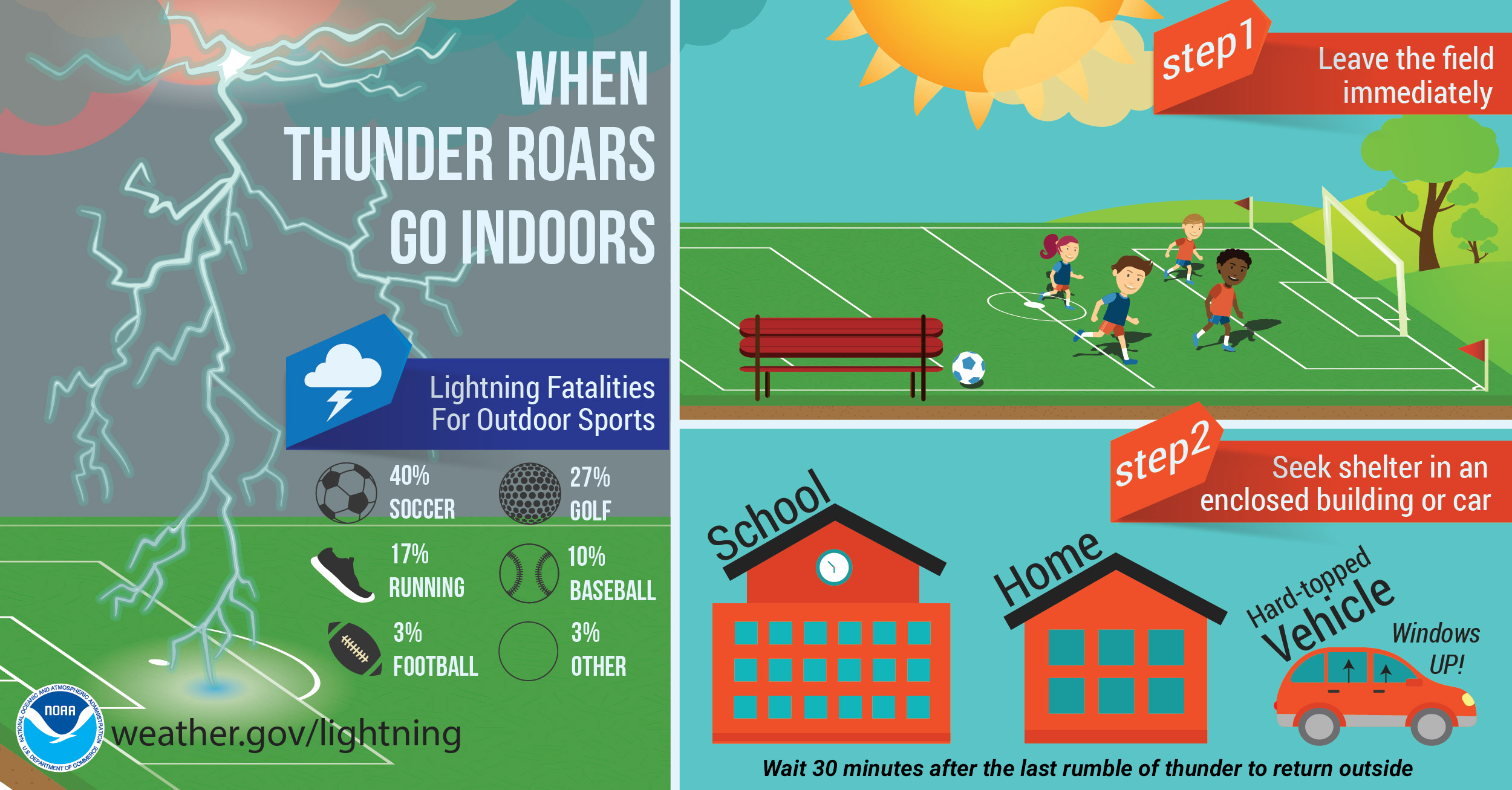Weather Risks
South Texas experiences its fair share of inclement weather, though the primary hazards in south Texas include high temperatures, thunderstorms, and flash flooding.
Realtime Local Weather Hub
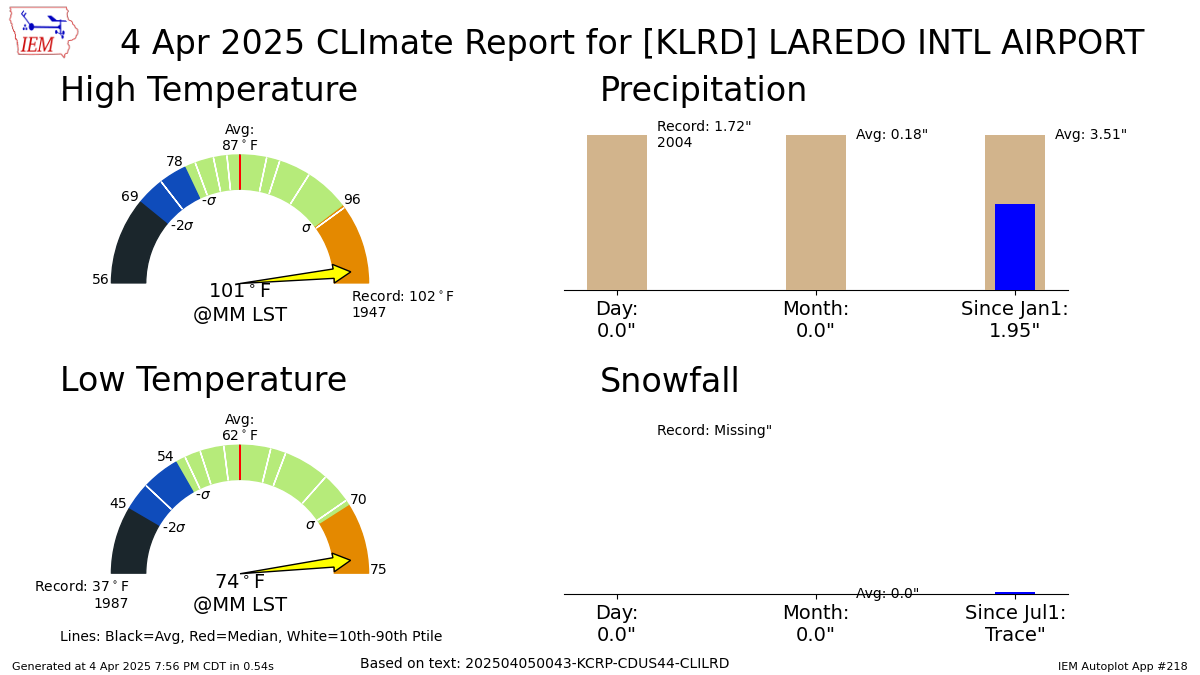
*Graphics are controlled by the National Weather Service - Corpus Christi and are subject to change at their discretion. Graphics may not correspond to noted heading and/or delayed/dated information may occur. Please consult the NWS website for timely information.
Heat Safety
South Texas is no stranger to heat. In fact, Laredo frequently sees more than 50 days with high temperatures over 100 degrees Fahrenheit. With prolonged heat comes the need to be prepared for such instances. Below are a just a few of many steps you can take to ensure you stay safe during those hot days.
- Never leave children or pets alone in closed vehicles.
- Slow down. Avoid strenuous activity. Reduce, eliminate, or reschedule strenuous activities.
- Take frequent breaks if you must work outdoors.
- Postpone outdoor games and activities.
- Dress appropriately
- Wear loose-fitting, lightweight, light-colored clothing that will cover as much skin as possible.
- Cover as much skin as possible to avoid sunburn and the over-warming effects of sunlight on your body.
- Protect your face and head by wearing a wide-brimmed hat.
- Drink plenty of fluids even if you do not feel thirsty.
Additional Resources
Severe Weather Safety
Thunderstorms can develop quickly and can produce frequent lightning, strong winds, and heavy rainfall amongst other hazards. It's important to keep an eye on the weather at all times, especially when severe weather is expected.
Did you know? Our office has portable lightning detectors available to check-out? The detector provides lightning protection with warnings for cloud-to-ground, cloud-to-cloud and intra-cloud lightning strikes within a 25 mile (40 kilometers) range. The lightning tracker notifies you with a loud alarm, flashing red LED light and text message on the backlit display when storms or lightning are within range.
Remember: When Thunder Roars, Go Indoors!
Winter Weather
Though rare, wintry precipitation and cold temperatures can and do occur. Given its rarity, it's especially important to be aware of the specific hazards to stay safe. Visit the National Weather Safety's page on winter weather safety (weather.gov/wrn/winter_safety) to learn more on preparedness strategies and other winter-related topics.
Weather Ready Nation Ambassador
TAMIU and the Office of Environmental Health and Safety are recognized as a Weather-Ready Nation Ambassador. The Weather-Ready Nation Ambassador™ initiative is the National Oceanic and Atmospheric Administration’s (NOAA) effort to formally recognize NOAA partners who are improving the nation’s readiness, responsiveness, and overall resilience against extreme weather, water, and climate events. As a WRN Ambassador, partners commit to working with NOAA and other Ambassadors to strengthen national resilience against extreme weather.
In effect, the WRN Ambassador initiative helps unify the efforts across government, non-profits, academia, and private industry toward making the nation more ready, responsive, and resilient against extreme environmental hazards. Weather-Ready Nation (WRN) is a strategic outcome where society’s response should be equal to the risk from all extreme weather, water, and climate hazards.

Environmental Health & Safety (EH&S) Department
TAMIU's Environmental Health and Safety Facebook TAMIU's Environmental Health and Safety Instagram
Texas A&M International University
University Police Department - 160
5201 University Boulevard
Laredo, Texas, 78041
